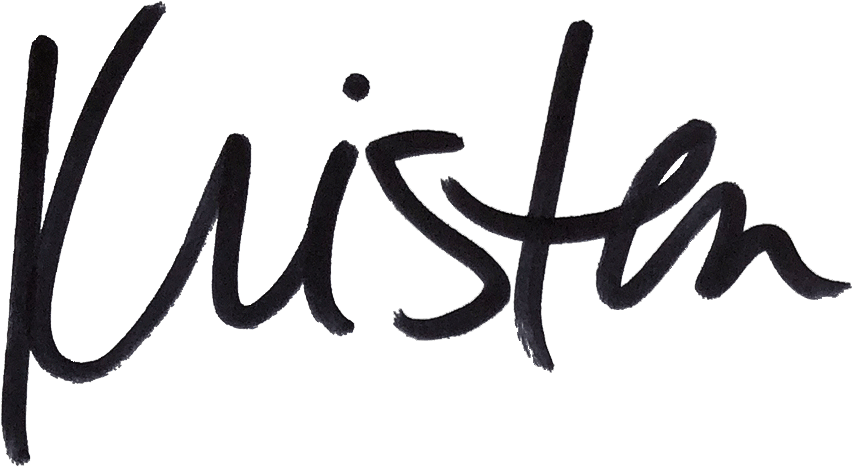In this episode of That’s What She Said, let’s walk through how feelings of overwhelm (and dealing with all things ‘unprecedented!’) can be tamed for your business by managing one simple concept: your scope of work.
Listen in below or keep reading for a transcript(ish) version!
Your scope of work allows you to determine exactly how much capacity you have to work in the coming months.
It also means you don’t have to despair when you notice person after person roll out their ‘this is exactly what I’m doing this year’ emails full of compelling copy and amazing offers.
You don’t have to know what your work year will look like eleven to fifteen months into the future.
The most brilliant and amazing things I’ve ever made weren’t plotted out like points on a graph years in advance. They were simply the next right thing that wanted to be made, so I made them. If you’re beating yourself up for your inability to know what 2021 and 2022 and even 2023 will look like, you’re not alone. Also! If there’s anything the past year has taught us, it’s that your plans may be interrupted or eliminated by forces beyond your control. (Like how the thing I love MOST IN THE WORLD about my job is teaching in person, and that’s gone until vaccinations are widely distributed at herd immunity saturation levels across the globe.)
There’s a number at the heart of your business that will help you move through overwhelm and whatever the year holds with greater ease.
It’s your scope of work: your current capacity to take care of your business without losing your sanity.
It’s okay if:
Your scope of work today is not the same as it was in 2019. (Mine is way smaller in scope.)
You have less capacity for work today than you did at some point in the past. (Post Covid, my brain takes about twice as long to write and to shape teaching materials as it did in 2019.)
Today’s version of you is overwhelmed more easily by thinking about your scope of work than you would have been at age 19, or 24, or whatever you’ve mentally tabbed as your glory days.
The pandemic has shaped and is shaping each of us as it moves through.
You might find diminished capacity in some areas.
That’s okay. You’re a human.
I’m here to help you stop throwing your hands up in angst when you try to look to the future of your business and instead you sink into the pit of despair. We’re trying to get to that spot where we’re not judging ourselves for our capacity, nor are we beating ourselves up for having failed to predict a global pandemic.
Okay? Okay.
Your scope of work is a function of time, money, and energy. It’s about working toward a place where you’ve hit ‘enough’ with all three.
Let’s start with time.
For the purposes of keeping this scope from being overwhelming, let’s imagine the next three months.
How much time do you have to work in and on your business on a weekly basis?
Multiply that number by 12, and voila! You’ve got precisely the amount of time on your plate for tackling the next question.
______ hours per week x 12 weeks = _________ (exactly how much time you’ve got to work in the next 3 months)
Next up: energy.
This is an overlooked aspect of business planning! Everything your make or offer takes not only time, but energy. You may be dragging yourself from day to day, or your may have FANTASTICALLY WOW WOW levels of energy. You’ll need to be honest about your energy level patterns in order to create a scope of work that doesn’t completely suck you dry.
Which programs, products, or services are you actively offering at the moment?
How much energy/capacity do you have to fulfill those active programs, products, or services?
HINT: THE ANSWER IS NOT INFINITE.
Marketing gurus the world over will talk about evergreen products, passive income, and making bajillions of dollars in 3.7 seconds using only click funnels and Facebook ads. But the answer to how much you can sell in the coming months is NOT infinite.
There’s a cap on how much follow-up, customer service, tech help, and individual attention you (and your employees/subcontractors) can provide at any one time.
What’s your capacity for fulfilling your services in 2021?
If, for example, you’re a wedding photographer, you can’t suddenly book and fulfill 317 weddings this calendar year. Your body, mind, and spirit can only support X clients. What is X? ‘Cause that’s your scope of work.
Likewise, how many sales can your business handle before overwhelm wins or the wheels come off? How much energy do you have for your business in THIS moment of 2021?
Selling evergreen products isn’t without its headaches and energy drains, so nope, you can’t sell 34,000 of that item without any hiccups this year. What’s your capacity for marketing and selling products and programs in the coming months?
Compare that against how much time you’ve got, and you’re closer to defining your scope of work in a way that’s actually doable. It’s easy to say you’ll write 4 books and 2 programs and take on 45 new clients! That looks fucking MAGNIFICENT written as a goal on your wall, doesn’t it?
But when you figure out that you’ve got 20 hours per week to work, times 12 weeks…meaning you’ve got 240 hours to work in the next three months…you can see how utterly unrealistic it is to ask yourself to write 4 books and 2 programs and take on 45 new clients.
This is NOTHING to feel bad about or beat yourself up for, okay? Capitalism skews toward goals being simple and MORE-based. I’ve seen this play out for clients who are looking for ‘more’ clients or ‘more’ sales. When they fail to define what ‘more’ is, it quickly becomes infinite and unreachable. You will NEVER feel like you’ve successfully gotten ‘more’ clients, ’cause the answer to getting more clients is…getting MORE clients.
Based on your physical, mental, and emotional energy — as well as the time you’ve got — what can you realistically handle creating, offering, and marketing in 2021?
Finally: money.
I’ve covered determining your enough number in this podcast episode in detail, so you can determine your ‘enough’ number and then come back here if your finances aren’t crystal clear at the moment!
A clearly defined scope of work helps you turn your current time and energy levels into what you deem ‘enough’ money.
How does your time and energy measure up to the earnings you’d like to bring in for the next three months?
When you’ve got the capacity to market and fulfill X products/services/programs, how does that alter your pricing?
Maybe nothing has to happen and your capacity matches your offerings.
Maybe your work is underpriced and so you need to raise some prices.
Maybe earnings aren’t the issue and acknowledging your current capacity instead of getting (more) burned out could help you feel less overwhelmed right now.
Maybe you’re totally burned out and need to take a break, so your usual numbers or estimates no longer apply.
I don’t know what your specific circumstances happen to be! I only know that nailing down your scope of work is helpful and stress-reducing.
Nailing down your scope of work leads to radical clarity.
Let’s say you need 6 clients per month. You talk with potential clients on calls before they purchase your services and about half of inquiries book. Fantastic! Then your scope of work is to have 6 clients, which means hosting 12 discovery calls per month.
I’ve seen KK on Tap clients go from swimming in ‘I JUST NEED MORE CLIENTS!!!!’ to ‘I need to book X discovery calls in order to get Y new clients.’ Can you feel the CALM that comes with that sentence? It’s finite. It’s not MORE MORE MORE MORE MORE MORE MORE. It’s a clear and precise number that’s actually doable.
Suddenly, most marketing efforts are reduced to one clear goal.
In this example, it’s getting discovery calls booked. I’ll talk about my clear goals ’cause that’s easier than making up hypotheticals about yours.
My scope of work this year includes the capacity to take good care of 20 year-long KK on Tap coaching clients, to create twice monthly That’s What She Said podcasts, and to host ongoing live breathwork meetups and a secret podcast for Together.
That means all my marketing efforts are geared toward one of two options. Instead of being like, ‘WHAT DO I SAY OH GOD WHAT DO I SAY…?’ I know that I’ve got to talk about either KK on Tap or Together, since those are my active programs at the moment. (There are *3* spots left in KK on Tap, so reach out and talk to me if you’d like business coaching for the next year!)
What is it that you need to talk about, focus on, or spread the word about in order to fulfill your scope of work this year?
What’s a reasonable amount of work that takes into account all of 2021’s nonsense while keeping you active and challenged in your business?
Where can you let go of services, products, or programs that you resent, are no longer excited about, or actively hate — so that your scope of work is more fulfilling?
Where can you forgive yourself for your inability to perform, make, or market at pre-pandemic levels?
Where can you give yourself room to make, market, and enjoy your work without falling into the infinite ‘I NEED MOOOOOOOORE’ pit of capitalism?
When you’ve got a clear sense of what you’re capable of doing, as well as a hold on the ways asshole brain will try to trip you up (like yelling “You need mooooore!!!!” no matter what), you’re closer to defining your scope of work. Because your scope of work is grounded in the present moment and keeps an eye toward having enough time, money, AND energy, you’re free to do your truest work in the world without making outrageously impossible goals! (Oh, you’re going to write 14 books and singlehandedly stop the pandemic — while losing 34 pounds and eating only organic greens? TOTALLY DOABLE, says asshole brain.)
I’d love to hear about your scope of work for the next three months!
What are you doing, making, dreaming up, marketing, or bringing to the world right now? Email me via k@kristenkalp.com, or shoot me a DM on Insta via @kkalp — FOR REAL FOR REAL.









